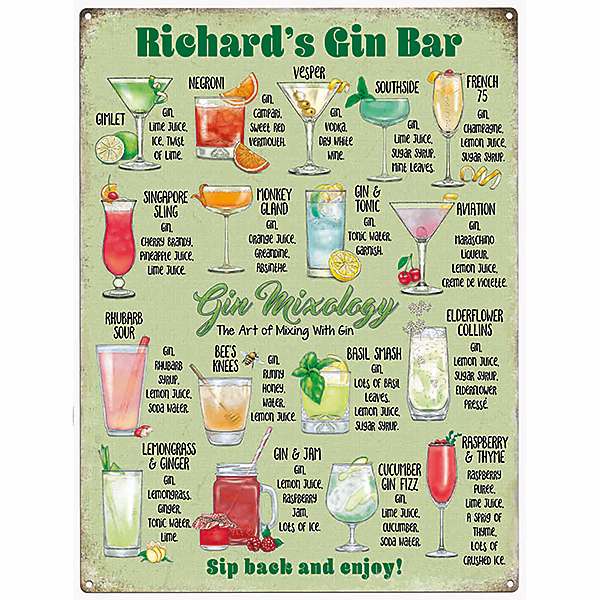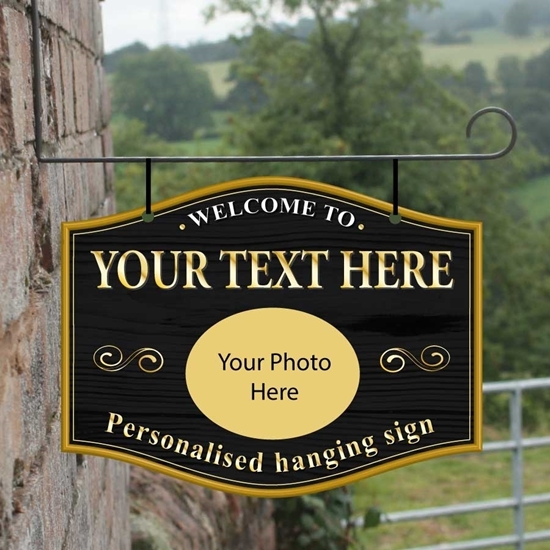Great Info To Picking Pub Signs
Great Info To Picking Pub Signs
Blog Article
What Are The Various Purposes Of Bar Signposts?
There are a myriad of reasons of bar signposts. There are several significant differences between bar sign. Branding
Objective: To establish and reinforce the brand's identity.
Features: Include the bar's logo, name and colors. It is designed to be a noticeable feature that reflects the overall theme of the bar and atmosphere.
Custom metal signs with the bar's name or a neon sign bearing its logo are examples.
2. Information
Goal : To inform patrons of important details about the bar.
Features: Clear and easy-to-read text that communicates vital information such as operating hours and Wi-Fi passwords as well as house rules, or restroom places.
For example, a sign near the entrance, that states operating hours, or points to the toilets.
3. Design
Objective: Enhance the aesthetic appeal of bar.
Features: These are usually more artistically themed, and contribute to the overall design of the bar. It may not contain any specific information or text.
Some examples: vintage advertising for beer, funny or humorous signs, theme artwork.
4. Promo Coupons
The purpose of this is to promote products, events, or specials.
Highlights: Stunning images that highlight special deals or upcoming events. Some elements are only temporary or changeable.
Examples include chalkboards with daily specials, banners for happy hour promotions and posters that promote future events.
5. Directional
The objective of the guide is to direct customers to the bar.
Features: Well-marked arrows and instructions that help customers navigate the bar, e.g., finding restrooms, exits or different sections.
Examples: Directional arrows for various seating areas, signage pointing toward restrooms and exits.
6. Regulatory/Compliance
Objective: To comply with legal requirements, and also to make sure that you are safe.
Specifications: Signs that are required to fulfill legal obligations like indicating smoking zones, occupancy limits and emergency exits.
Examplesinclude "No Smoking", occupancy limits, and emergency exit signs.
7. Interactive
Purpose: To engage customers and provide an engaging experience.
Specifications: Features that stimulate interaction among patrons, such as interactive surfaces or write-on surfaces.
Examples include chalkboards to display customer messages, or signs that have QR codes that lead to menus that are digital.
8. Thematic
Goal: To create a certain theme or ambience.
Highlights: Signs that fit the bar's theme and contribute to the overall ambience.
Examples: Pirate signs in nautical bars and rustic wooden signs in a bar with a country theme.
9. Menu
The purpose of this page is to display the bar's menu items.
Features: Clearly list beverages and food items along with their prices. Can be static or changeable.
Examples include rotating digital menus on screens or wall-mounted menus.
Every type of bar sign serves a distinct function and is designed to serve its purpose within the bar environment. By understanding the differences between the different types of signs, bar managers will be able to choose and place signs in a manner that enhances their patrons’ experience and meets their operational requirements. Check out the top inquiry for more tips including design a pub sign, hanging pub signs, bar pub signs, staying inn sign, make a pub sign, the staying inn sign, garden bar signs, personalised metal pub signs, staying inn sign, personalised metal bar signs and more.
What Is The Difference Between Installing And Mounting Bar Signs?
Methods of mounting and installing bar signs differ based on a variety of factors including type, size and weight as well as the location of the sign and its intended purpose. Here's a look at how to mount and set up bar signs. Wall-mounted signs
Features: Fixes directly onto walls.
Methods:
Screws and Anchors are used to secure heavier signs (metal or wood).
Adhesive Strips: Great for lighter signs (foam board and acrylic) and temporary installations.
Brackets are utilized for signs which need to be pushed out from the wall in order to improve visibility.
Uses: Indoor decor, menu boards, directional signs.
Benefits: It is easily adjustable with a secure and clear display.
It's hard to relocate and it can cause damage to walls.
2. Hanging signs
Characteristics They are suspended from ceilings or overhangs.
Methods:
Chains: Sturdy and adjustable perfect for large signs.
Cables : A contemporary appearance with a more sleek look.
Rods: Provide a rigid support structure.
Uses: Ceiling decor, directional signs, overhead promotional signs.
The vertical space is extremely noticeable and the design options are endless.
Disadvantages
3. Freestanding Signs
Characteristics : not connected to any structure, supported by a support or base.
Methods:
A-Frames: Foldable and portable frequently used for sidewalk advertising.
Pedestal Stands: Stable base, ideal for indoor use.
Post and Panel is a popular expression for permanent, large signs.
Uses: Outdoor advertising, indoor directional signs, promotional displays.
Portable, versatile and able to be easily relocated.
Disadvantages: Can be bulky and requires floor space.
4. Window Signs
Specifications: It is attached to the window directly.
Methods:
Suction cups: Easy installation and removal, perfect for signs that are smaller.
Adhesive Glass: Can be directly applied to the glass's surface. Ideal for decals, graphics and other graphics.
Static Cling: Non-permanent, reusable and simple to apply or remove.
Uses: Promoting message, branding and operating hours.
Benefits: Increases the space inside the window, and is highly visible outside.
Limitations in window size and sunlight can affect the performance.
5. Signs with Backlit Edge-Lit and LEDs
The sign's characteristics include lighting within the structure of the sign.
Methods:
Wall mounting with electrical connections: It requires a secure connection and electrical connections.
Suspended Power Cables Combining hanging technique and integrated lighting.
Utilizes: Brands with high-visibility menu boards as well as decorative objects.
Advantages: Enhanced visibility, attractive illumination.
The installation process is complex and requires a lot of electricity.
6. Temporary & Portable Signs
Features: Designed for simple installation and removal.
Methods:
Pop-up Stands: Light and compact.
Banner Stands: Roll-up or retractable designs.
Uses : Events, promotions and seasonal decor.
Fast and simple installation and quick.
Disadvantages: Less durable, could not be as stable.
7. Magnetic Signs
Specifications: Attach using magnetic force.
Methods:
Magnet Strips: These are applied on the back of the sign.
Magnetic Boards: Sign attaches to a metal surface.
The uses include: menu boards, notices that are not permanent or changeable.
Advantages: Easy to install and remove, no permanent fixtures needed.
Cons Magnetic surfaces aren't as strong and can result in less security.
8. Projection signs
The main feature of light is that it's used to show images and text.
Methods:
Mounted Projectors: Securely mounted on ceilings or walls.
Portable projectors can be placed on stands, or on other surfaces.
Applications: Dynamic displays events, promotions.
Benefits: No need to buy an actual sign, since content is easily changeable.
Negatives
Take into account when mounting and assembling
Size and weight
Heavy Signs: These require more sturdy mounting options, such as screws and anchors.
Light Signs: You can make use of simpler methods like adhesive tape or suction cups.
Durability
Permanent Signs: Choose an extra secure and long-lasting method of mounting.
Temporary signs: Pick methods that are easy to remove and reposition.
Location
Indoor: More flexibility with materials, methods and weather resistance.
Outdoor: Requires weather resistant materials and secure mounting in order to withstand elements.
Aesthetics
Concealed Mounting gives a neat appearance, concealing the entire hardware.
Decorate Hardware: It can enhance the look of a sign.
Accessibility
Easy Access to Changes Signs that are updated regularly, such as menu boards.
Security: Signs are guarded from being easily tampered and taken.
Bar owners need to take into consideration these aspects when choosing the best mounting and placement technique that is suitable for their needs. This will ensure that their signs are easily visible, safe and satisfy their aesthetic and functional requirements. View the recommended bar signs for home for site info including personalised pub signs for sale, bar signs for home bar, personalised pub signs for sale, bar wall signs, home made bar sign, personalised metal bar signs, pub signs for home bars, personalised garden pub sign, gin bar sign, personalised cocktail sign and more.
What Is The Difference Between Bar Signs With Respect To Budget?
Bar signs can be subject to an array of prices depending on factors including the size, kind of material, the level of personalization, and the specifications for installation. Here's how bar sign prices differ with regard to budget: 1. Material Cost
Low-cost materials: Signs created from foam board and vinyl decals are typically less expensive.
High-cost Materials: Signs made out of premium materials (metal or wood) as well as customized cut glass) can be costly due to the costs of the materials and the quality of workmanship.
2. Design Complexity
Simple Design: Signs with simple designs that have minimal text and graphics, as well as signs that are straightforward in style, are usually priced less.
Complex Designs: Signs that require intricate graphic designs, custom fonts or special effect (e.g. LED, neon) require more experience and knowledge.
3. Customization
Standard Options: Pre-designed templates or off-the-shelf signage options tend to be more cost-effective than custom-designed signs.
Customized Features: Customized branding, logos, colors, and finishes add to the cost but offer unique branding options that are that are specific to the brand's image.
4. Size and Scale
Small-Scale signs: Thanks to their low cost of production and the materials used Tabletop signs, decals, or wall-mounted signage are generally less expensive.
Large-Scale Advertising: Signs that are large in size, outdoor marquees, and display displays that are illuminated all need more work and equipment. This means more expensive costs.
5. Lighting
Non-Illuminated Signs: Basic signs with no lighting elements are usually less costly than illuminated ones since they require less components and electrical power.
Illuminated Signs that are illuminated. Neon LED, backlit and neon signs cost more because of the wiring, materials and the energy required.
6. Installation
DIY Installation: Signs which can be easily put up by the bar owner or the staff are cheaper than those requiring expert installation.
Professional Installation Signs that are huge or complex may require professional installation. While this may increase the price of the sign, it ensures the safety of the sign and ensures proper mounting.
7. Quantity
Bulk Orders. Ordering multiple signage packages or signs could qualify for a volume discount, or lower unit cost than single orders.
Single Orders - Ordering single signs or custom pieces could be more expensive due to manufacturing and installation costs.
8. Maintenance and Long-Term Costs
Low-Maintenance Warning Signs: Signs that need minimum maintenance and an extended lifespan could save you money through lowering the cost of replacement and upkeep.
Signs with high maintenance requirements Signs that have intricate designs or delicate materials could require more maintenance costs.
9. Budget Allocation
Allocated Budget by allocating a certain budget to signage bar owners are able to allot their funds to key aspects, like branding and visibility.
Cost-Benefit analysis: Bar managers can make informed decisions by looking at the return on investment of their signage options.
Financing Options
Prepaying for signs in advance can be cheaper than financing through installments or loans, since you avoid interest fees and financing charges.
Financing Plan: A few signage providers provide financing options or payment plans to help spread over the cost of signage. This makes higher-end options accessible to bar owners who do not need the need for a huge upfront investment.
By considering these factors and working within their budgetary limitations, bar owners can select signage solutions that effectively communicate their brand's identity, improve the customer experience and help to ensure the overall success of their establishment. Check out the most popular bar signs for home blog for blog advice including large pub sign, personalised pub signs, indoor bar signs, a bar sign, personalised metal pub signs, pub signs for garden, to the pub sign, pub wall sign, make your own bar sign, personalised home pub sign and more.